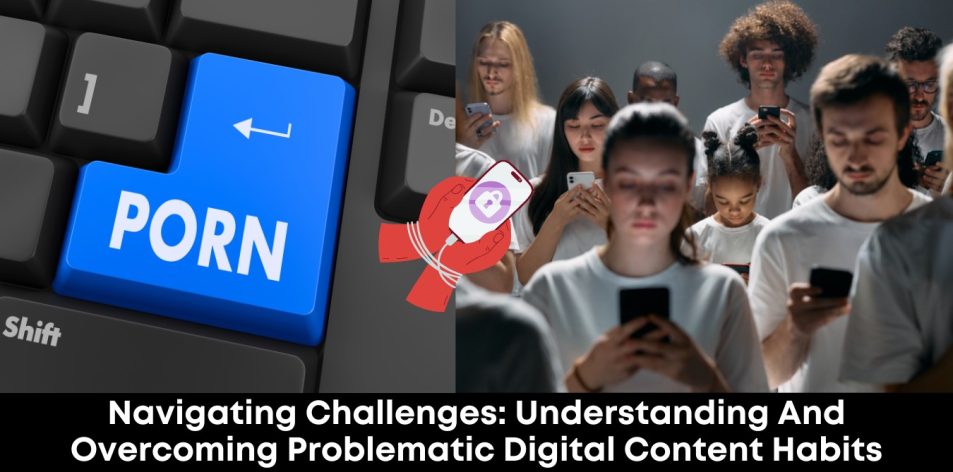Prioritising Mental Well-being and Healthy Living
In our increasingly connected world, digital content is readily accessible, offering entertainment, information, and connection. However, for some, the consumption of certain types of digital content, particularly those that are sexually explicit, can evolve into a problematic habit, impacting mental health, relationships, and overall well-being. This article aims to shed light on the potential negative effects of excessive engagement with such content and provide practical steps and supportive strategies for overcoming these habits, fostering a healthier and more balanced life.
The Impact of Problematic Digital Content Habits
When the viewing of sexually explicit content becomes excessive, compulsive, or interferes with daily life, it can lead to a range of challenges:
- Mental and Emotional Strain:
- Guilt, Shame, and Low Self-Esteem: Individuals may experience intense feelings of guilt or shame, leading to diminished self-worth and self-confidence.
- Anxiety and Depression: Excessive use can contribute to increased anxiety, stress, and feelings of depression.
- Isolation: A problematic habit can lead to social withdrawal, as individuals may prioritise content consumption over real-life interactions, fostering loneliness.
- Unrealistic Expectations: It can create distorted or unrealistic views of relationships and intimacy, leading to dissatisfaction in personal connections.
- Desensitisation: Over time, individuals may become desensitised, requiring more extreme or frequent content to achieve the same level of engagement, leading to a potentially escalating cycle.
- Impact on Relationships:
- Decreased Intimacy and Trust: Partners may feel betrayed or a lack of emotional closeness, leading to strain on intimate relationships.
- Communication Breakdown: Secrecy and withdrawal can hinder open communication with loved ones.
- Unrealistic Demands: Individuals may develop unrealistic expectations of partners, leading to dissatisfaction and conflict.
- Cognitive and Behavioural Changes:
- Impaired Focus and Productivity: Excessive consumption can lead to mental fatigue, difficulty concentrating on tasks (at work or study), and procrastination.
- Compulsive Cravings: Developing strong urges to view content, even when trying to stop or reduce use.
- Neglecting Responsibilities: Prioritising content viewing over essential daily duties and obligations.
Strategies for Overcoming Problematic Habits
Overcoming a problematic digital content habit requires commitment and a multi-faceted approach. Here are practical steps to consider:
1. Acknowledge and Understand the Habit
- Self-Awareness: Recognise that the habit is causing negative impacts in your life. This is the crucial first step.
- Identify Triggers: What time of day, emotions (e.g., stress, boredom, loneliness), or situations (e.g., being alone, after a particular task) typically lead to content viewing? Understanding your triggers is vital for prevention.
2. Set Clear Boundaries and Limits
- Time Management: Dedicate specific, limited times for internet use for necessary tasks. Avoid casual Browse during vulnerable periods.
- Technology-Free Zones: Designate certain areas (e.g., bedroom, dining table) or times (e.g., an hour before bed, during meals) as strictly tech-free.
- Digital Detox: Consider short periods of complete abstinence from screens to reset your habits and focus.
- Reduce Accessibility: Move tempting apps or browser shortcuts to less accessible folders on your device or consider uninstalling them temporarily.
3. Create Friction and Barriers
- Turn Off Notifications: Disable push notifications from websites or apps that are a source of distraction.
- Use Website Blockers: Install browser extensions or apps that can block access to specific websites during certain times.
- Accountability Software: Some software allows you to share your screen activity with a trusted friend or family member for accountability.
4. Cultivate Alternative Activities and Healthy Habits
- Engage in Hobbies: Rediscover or develop new hobbies and interests that provide enjoyment and fulfilment offline. Examples include sports, reading, spending time in nature, creative pursuits, or learning a new skill.
- Increase Social Interaction: Actively seek out face-to-face interactions with friends and family. Connect with community groups or volunteer.
- Physical Activity: Regular exercise can significantly boost mood and reduce stress, providing a healthy outlet.
- Mindfulness and Reflection: Practice mindfulness exercises, meditation, or journaling to become more present and aware of your thoughts and feelings, helping to manage urges.
- Prioritise Sleep: Ensure you get adequate, quality sleep, as fatigue can weaken willpower and make you more susceptible to old habits.
5. Seek Support
- Talk to a Trusted Individual: Confide in a close friend, family member, or mentor who can offer understanding, encouragement, and accountability.
- Join Support Groups: Connecting with others facing similar challenges can provide a sense of community, shared strategies, and reduced feelings of isolation.
- Professional Help: If the habit feels overwhelming or significantly impacts your life, seeking guidance from a counsellor, therapist, or mental health professional specialising in behavioural habits can be incredibly beneficial. They can provide tailored strategies, address underlying issues like anxiety or depression, and offer a structured path to recovery.
A Journey Towards Greater Well-being
Overcoming problematic digital content habits is a journey that requires patience, perseverance, and self-compassion. By understanding the potential impacts, implementing practical strategies, and actively seeking support when needed, you can regain control, foster healthier habits, and ultimately lead a more balanced, fulfilling, and focused life, enriching your mental well-being and personal relationships.

